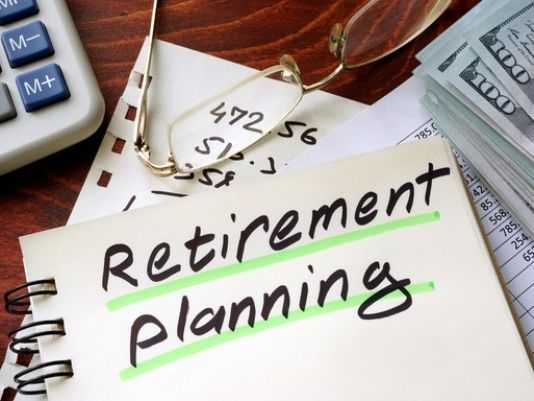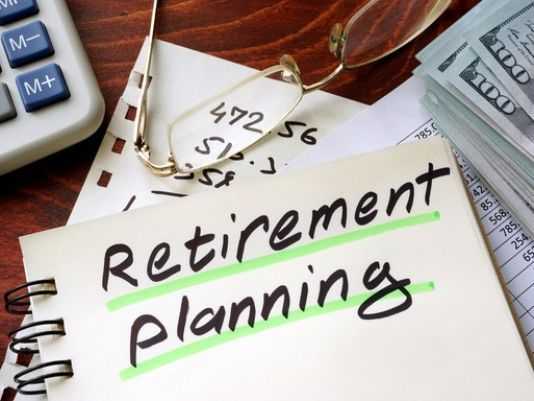Home
 Finance News
Finance News
 Many Teachers Are Learning A Hard Lesson About Student Debt And Saving For Retirement
Many Teachers Are Learning A Hard Lesson About Student Debt And Saving For Retirement
 Finance News
Finance News
 Many Teachers Are Learning A Hard Lesson About Student Debt And Saving For Retirement
Many Teachers Are Learning A Hard Lesson About Student Debt And Saving For Retirement
Many Teachers Are Learning A Hard Lesson About Student Debt And Saving For Retirement
Many teachers are learning a hard lesson about student debt and saving for retirement
Many teachers are learning a hard lesson about student debt and saving for retirement
Lucia Brockway, a 31-year-old high school English teacher in Brooklyn, N.Y., learned a grim lesson of her own while studying to be a teacher: Student debt will be a big part of her life for decades to come.
Her husband, also a teacher, taught her something else — that it’s important to save for retirement, even if at first it’s not a lot of money. Unfortunately, for Brockway and other educators, balancing the two isn’t easy. Teachers must pay back massive student debt (many earn their master’s degree, for instance), while paying for other financial responsibilities and saving for their futures. And they’re not typically high earners.
Schools may pay teachers more if they have a master’s degree — 96% of the 112 major U.S. school districts in the National Council on Teacher Quality database are paid more if they have a master’s than just a bachelor’s degree, with an average of $3,205 in the first year of teaching — but it’s still not enough. “Our salaries don’t allow us to pay for those degrees, or we have to pay loans for the rest of our lives, which is what I’m doing,” Brockway said.
Between undergraduate and graduate school, Brockway has more than $100,000 in student debt. The average amount of debt for education majors grew dramatically between 2000 and 2012 — bachelor’s degree recipients accrued $26,792 in debt in 2012 compared with $20,644 in 2000, while master’s degree recipients accrued $48,685 in debt in 2012 compared with $26,650 in 2000, according to data from the National Postsecondary Student Aid Study. The number of people with master’s degrees and student debt also grew substantially in 2012, up to 67% from 41% in 2000. Meanwhile, the national base salary average for teachers is $53,000, according to the National Center for Education Statistics.
Teachers have a few retirement saving options: some school systems offer a defined benefit plans, which are pensions, while others have defined-contribution plans, such as 403(b) and 457(b) plans and rely on the employee to make the contributions. Pension plans are a way to retirement security, said Michael Hairston, a senior pension specialist at the National Education Association, an organization for public school teachers and faculty. “It’s all coming out of their check each month,” he said.
Still, aside from the fact that not all systems offer a pension, relying on one may leave a teacher short of income when they’re ready to retire — the problem with pensions goes beyond the fact that they may not pay out as much as promised when it’s time to retire, but rather, it presently disadvantages teachers who move from one district to another and therefore are entered into another pension plan, according to Teacher Pensions, an education nonprofit organization under Bellwether Education Partners. Also, because of these public retirement systems, about 40% of public school teachers do not pay into Social Security, according to the National Association of State Retirement Administrators.
Teachers have the opportunity to contribute even more to their futures with a 403(b) plan, a tax-sheltered annuity plan, or a 457(b) plan, another retirement plan for government and non-governmental employees such as teachers, or they can also use individual retirement accounts, too. “You have to invest for yourself — don’t be self-reliant on a pension,” said Jeff Rose, a financial adviser in Nashville, Tenn. and owner of the Finance for Teachers blog. Some teachers, like those in Illinois where Rose started his firm, are wary of their state pension plans, and if there will be money in it when they retire.
But there’s one more problem, and it lies in thinking so far ahead when there are more pressing financial obligations in the present. “I am not a saver by nature,” Brockway said. “I would rather live in the moment and enjoy my life now — it is hard for me to see myself in my 50s and 60s.” Still, she makes contributions.
As far as which to put money toward first — paying down student debt or saving for retirement — Rose said it should be both: make the monthly student debt payments, and throw in $25 or $50 to a retirement account, he said. Student debt payments can also be adjusted to income-based repayments, which will lower monthly payments if automatically determined repayments are too high per month. Couples who are married and filing jointly should beware, however — an increased salary bracket will affect the loan payment teachers must repay, Brockway learned. Teachers might also qualify for a debt forgiveness program — it involves making 120 payments over 10 years — though the few who know about the program may not reap any actual benefits from it, and the future of the program itself isn’t certain.
In order to juggle all of these financial responsibilities, teachers watch what they spend, and may even take on side jobs tutoring or working summer school. Elishia Jackson, a 26-year-old athletic trainer who works in a school in Yelm, Wash., and has been paying back her student loans, said she makes her own lunches and coffee, and sets up automatic transfers to her savings account (from which she tries to avoid withdrawing). “I don’t touch my savings at all,” she said. “It’s hard sometimes, and it’s easy to switch some money to my checking, but I’m not going to do that.”
Source:- http://www.marketwatch.com/story/money-milestones-many-teachers-are-learning-a-hard-lesson-about-student-debt-and-saving-for-retirement-2017-09-12
Source:- http://www.marketwatch.com/story/money-milestones-many-teachers-are-learning-a-hard-lesson-about-student-debt-and-saving-for-retirement-2017-09-12
You May Also Like
3 Unexpected Retirement Costs Tha..
Must-have Tools And Tips For Year..
Retirement Dream -- More Money Fo..
What You Don't Know About Social ..
The Profits Made From Flipping Ho..
Ask A Fool: IRA Vs. 401(k), Which..
This Is The Maximum Social Securi..
Must-have Tools And Tips For Year..
Share the joy
Recent News
Retirement dream -- more money for travel, less for health care -- tough to achieve
What you don't know about Social Security in 2018
Must-have tools and tips for year-end retirement planning
3 unexpected retirement costs that can shake up your finances
This is the maximum Social Security retirement benefit payable in 2018
Ask a Fool: IRA vs. 401(k), which is the better choice
Recent Articles
Searching For The Option Of Private College Loans, Find The Best Student Loan, Best Student Loan C..
Refinance Student Loans, Best Private Student Loan Options, Best Student Loan Companies, Choose Th..
Parent Plus Loans And Its Wonderful Advantages, Choose The Best Student Loans, Best Student Loan C..
Online College Vs. Traditional Degrees, Student Loan Consolidation, Best Private Student Loan Opti..
Knowing Everything About The Federal Consolidation Loan, Graduate Student Loans, Graduate And Prof..
How To Find Low-Interest Student Loans, Low-interest Student Loans, Find The Best Student Loan, Be..





 Home
Home















